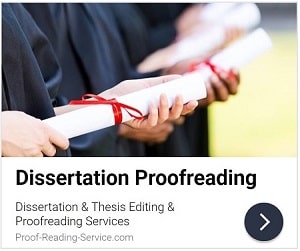Introduction
Submitting a research paper to an academic journal is a critical step in the dissemination of scientific knowledge. One of the most common reasons for initial rejection or delay in processing is failure to follow the author instructions provided by the journal. These guidelines serve as essential directives for formatting, structuring, and presenting a manuscript to ensure consistency, clarity, and professionalism. Ignoring them can result in outright rejection, unnecessary revisions, and a prolonged publication timeline.
In this article, we explore the significance of following author instructions, the potential consequences of neglecting them, and best practices to ensure compliance when preparing a submission for an academic journal.
Understanding Author Instructions
Every academic journal has specific instructions for authors, often listed under a section called “Author Guidelines” or “Instructions for Authors.” These guidelines typically include:
- Manuscript Formatting – Requirements for font type, font size, line spacing, and word count.
- Title Page Requirements – Guidelines for structuring the title page, including the title, author names, affiliations, and corresponding author details.
- Abstract and Keywords – Instructions on the length and format of the abstract and selection of relevant keywords.
- Manuscript Structure – Detailed guidelines on organizing the content into sections such as Introduction, Methods, Results, Discussion, and Conclusion.
- Citation and Referencing Style – Specific referencing style required (e.g., APA, MLA, Chicago, Harvard).
- Figures and Tables – Technical specifications for submitting figures, tables, and supplementary materials.
- Ethical Considerations – Requirements for plagiarism checks, conflict of interest disclosures, and ethical approval for studies involving human or animal subjects.
- Cover Letter Requirements – Information on how to write and structure the submission cover letter.
Consequences of Ignoring Author Instructions
Failing to adhere to journal guidelines can have several negative consequences, including:
1. Immediate Rejection Without Review
Many high-impact journals implement a desk-rejection policy if a manuscript does not conform to the prescribed guidelines. Even if the research is of high quality, editors may reject the submission outright if it does not meet formatting or submission requirements.
2. Delays in the Review Process
Even if a manuscript is not rejected outright, failure to follow author instructions can result in additional revisions before peer review, leading to significant delays in the publication process.
3. Increased Likelihood of Errors
Non-compliance with formatting and referencing styles increases the chance of typographical, citation, and structural errors, which can undermine the credibility of the research.
4. Negative Impression on Editors and Reviewers
A poorly formatted manuscript creates a negative first impression, leading editors and reviewers to question the author’s attention to detail and adherence to academic standards.
5. Additional Workload for Authors
Failure to follow author instructions often results in mandatory revisions, requiring additional time and effort that could have been avoided if the guidelines were followed from the outset.
Best Practices for Following Author Instructions
To ensure compliance with journal guidelines and increase the likelihood of acceptance, authors should adopt the following best practices:
1. Read the Author Instructions Carefully
Before drafting the manuscript, carefully review the journal’s author guidelines. Familiarize yourself with formatting, structuring, and citation requirements.
2. Use a Journal-Specific Template
Many journals provide templates or sample manuscripts that authors can use to format their papers correctly. Utilizing these resources ensures compliance with the journal’s requirements.
3. Check the Scope of the Journal
Ensure that your research aligns with the journal’s scope and objectives. Submitting a manuscript that does not fit within the journal’s thematic focus increases the chances of rejection.
4. Follow the Referencing Style Precisely
Citations and references should be formatted exactly as per the journal’s requirements. Using reference management tools such as EndNote, Mendeley, or Zotero can help maintain accuracy.
5. Adhere to Word Count and Section Lengths
Journals impose word limits for the abstract, main body, and references. Exceeding these limits may result in requests for revision or outright rejection.
6. Ensure Figures and Tables Meet Specifications
Check the journal’s requirements for image resolution, file format, and table structure. Figures should be labeled appropriately and submitted in the prescribed format (e.g., TIFF, PNG, or JPEG).
7. Write a Concise and Professional Cover Letter
A cover letter should summarize the significance of the research, highlight its relevance to the journal, and confirm adherence to ethical standards. Avoid generic cover letters and tailor them to each journal.
8. Conduct a Final Review Before Submission
Before submitting, conduct a thorough review to ensure compliance with all guidelines. Use checklists provided by the journal, if available.
9. Seek Editorial or Peer Feedback
Having colleagues or mentors review your manuscript before submission can help identify formatting or structural issues that might have been overlooked.
10. Stay Updated on Journal Policies
Journals periodically update their submission guidelines. Always check the latest version of the author instructions before submitting a manuscript.
The Role of Pre-Submission Checks
Many journals provide pre-submission checklists or automated tools to ensure compliance with author guidelines. These checks help:
- Verify formatting and structure
- Identify missing elements (e.g., abstract, keywords, ethical declarations)
- Ensure proper citation style
Authors should take advantage of these tools to minimize submission errors.
Conclusion
Ignoring author instructions when submitting a manuscript to an academic journal can lead to rejection, delays, and unnecessary revisions. Following these guidelines ensures a smooth submission process, increases the likelihood of acceptance, and enhances the credibility of the research. By reading the instructions carefully, adhering to formatting and citation requirements, and conducting thorough pre-submission checks, authors can streamline the publication process and contribute to the advancement of scholarly knowledge.
You might be interested in Services offered by Proof-Reading-Service.com
Journal Editing
Journal article editing services
PhD Thesis Editing
PhD thesis editing services
Expert Editing
Expert editing for all papers
Medical Editing
Medical Editing Services
Research Editing
Research paper editing services
Book Editing
Professional book editing services














